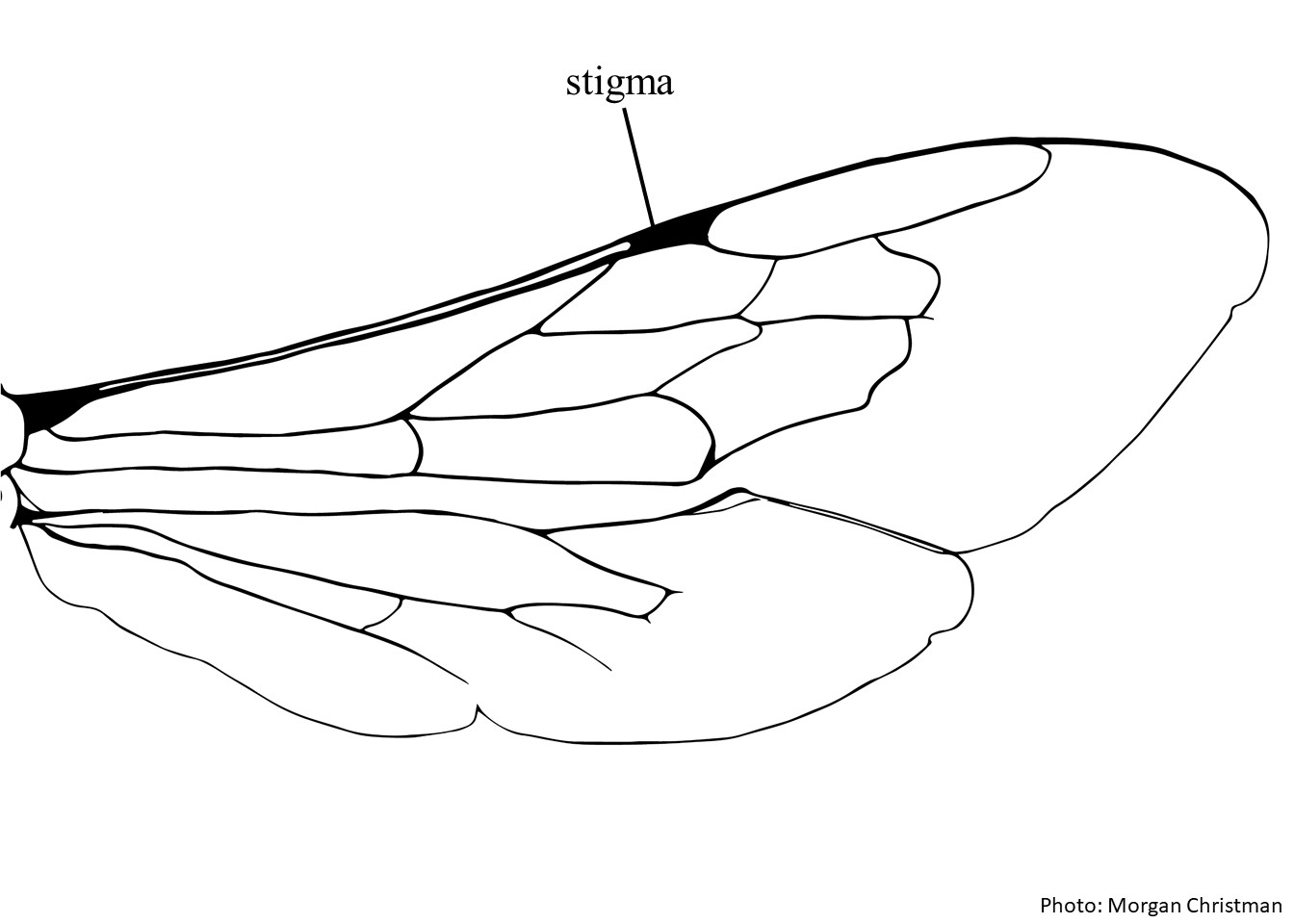Family: Megachilidae
Subfamily: Megachilinae
Tribe: Megachilini
Genus: Gronoceras Cockerell, 1907
Subgenera: none
Common name: none
Gronoceras are large, elongate bees ranging in body length from 17–29 mm (Michener 2007Michener 2007:
Michener, C.D. 2007. The Bees of the World (2nd ed.). Johns Hopkins University Press, Baltimore and London, 953 pp.). They often have black integumentintegument:
a tough, protective outer layer
with grey and black pubescencepubescence:
short, fine hair
in addition to large areas of red or reddish-yellow pubescencepubescence:
short, fine hair
on their thorax and head (Michener 2007Michener 2007:
Michener, C.D. 2007. The Bees of the World (2nd ed.). Johns Hopkins University Press, Baltimore and London, 953 pp.). Gronoceras was previously a subgenus of Megachile (Trunz et al. 2016Trunz et al. 2016:
Trunz, V., L. Packer, J. Vieu, N. Arrigo, and C.J. Praz. 2016. Comprehensive phylogeny, biogeography and new classification of the diverse bee tribe Megachilini: Can we use DNA barcodes in phylogenies of large genera? Molecular Phylogenetics and Evolution 103: 245ndash;259.).
(modified from Michener 2007Michener 2007:
Michener, C.D. 2007. The Bees of the World (2nd ed.). Johns Hopkins University Press, Baltimore and London, 953 pp. unless otherwise stated)
 over twice as long as broad.
over twice as long as broad.Gronoceras may be confused with species in the subgenus Megachile (Stenomegachile) due to similar dense hairs on the male T6T6:
the segments on the top side of the abdomen, often abbreviated when referring to a specific segment to T1, T2, T3, T4, T5, T6, or T7 . Gronoceras can be differentiated by the presence of three apicalapical:
. Gronoceras can be differentiated by the presence of three apicalapical:
near or at the apex or end of any structure
spines on the front and middle tibiatibia:
the segment of the leg, between the femur and the tarsus (Michener 2007Michener 2007:
Michener, C.D. 2007. The Bees of the World (2nd ed.). Johns Hopkins University Press, Baltimore and London, 953 pp.).
There was a single record of Gronoceras in Jamaica that indicates it may have been introduced to the area, but there is no evidence that the genus established there (Michener 2007Michener 2007:
Michener, C.D. 2007. The Bees of the World (2nd ed.). Johns Hopkins University Press, Baltimore and London, 953 pp.).
Gronoceras have been observed pollinating Ansellia africana, Cajanus cajan, and Vanilla imperialis (FAOUNR 2008FAOUNR 2008:
Food and Agriculture Organization of the United Nations, Rome (FAOUNR). 2008. Tools for conservation and use of pollination services. Pollination Services for Sustainable Agriculture: 1ndash;143.; Martin 2009Martin 2009:
Martin, D.J. 2009. Pollination and facultative ant-association in the African leopard orchid Ansellia africana. Journal of East African Natural History 98: 67ndash;77.).
Gronoceras occurs throughout Africa, from Senegal to Eritrea, south to Namibia, and Natal in South Africa (Michener 2007Michener 2007:
Michener, C.D. 2007. The Bees of the World (2nd ed.). Johns Hopkins University Press, Baltimore and London, 953 pp.).
Distribution map generated by Discover Life -- click on map for details, credits, and terms of use.
Food and Agriculture Organization of the United Nations, Rome (FAOUNR). 2008. Tools for conservation and use of pollination services. Pollination Services for Sustainable Agriculture: 1-143.
Gonzalez, V.H. 2008. Phylogeny and classification of the bee tribe Megachilini (Hymenoptera: Apoidea, Megachilidae), with emphasis on the genus Megachile. Doctoral dissertation, University of Kansas.
Litman, J.R. 2012. Phylogenetic systematics and the evolution of nesting behavior, host-plant preference, and cleptoparasitism in the bee family Megachilidae (Hymenoptera, Apoidea). Cornell University 2012: 1-213.
Martin, D.J. 2009. Pollination and facultative ant-association in the African leopard orchid Ansellia africana. Journal of East African Natural History 98: 67-77.
Michener, C.D. 2007. The Bees of the World. 2nd ed. Johns Hopkins University Press, Baltimore and London, 953 pp.
Trunz, V., L. Packer, J. Vieu, N. Arrigo, and C.J. Praz. 2016. Comprehensive phylogeny, biogeography and new classification of the diverse bee tribe Megachilini: Can we use DNA barcodes in phylogenies of large genera? Molecular Phylogenetics and Evolution 103: 245-259.